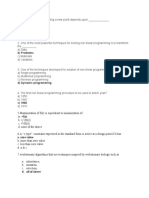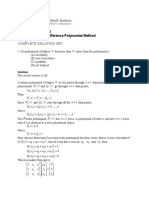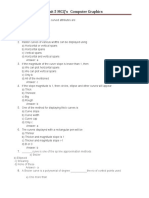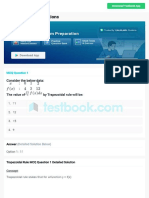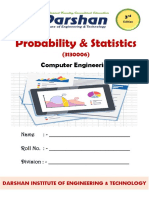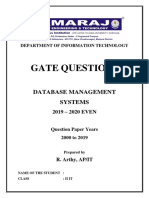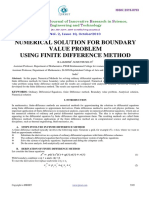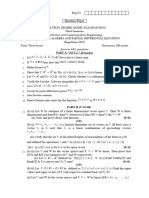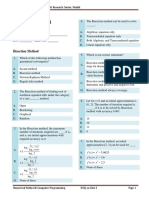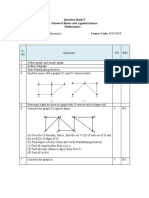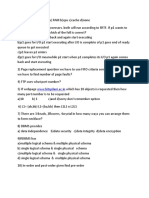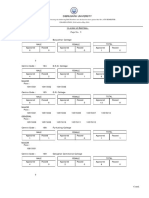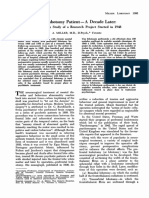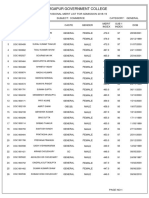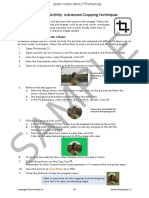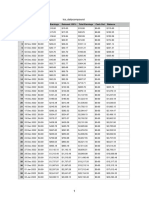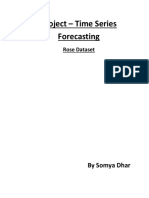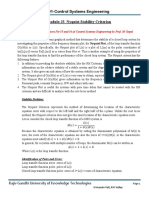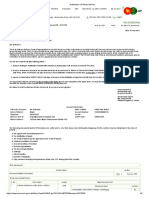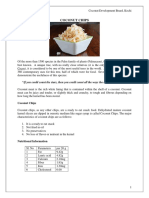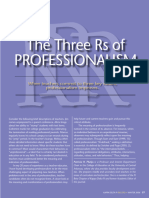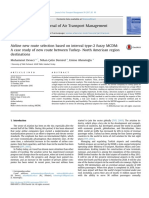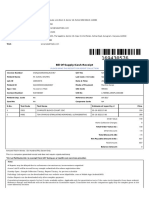0% found this document useful (0 votes)
2K views7 pagesNumerical Methods Paper - 2016
1. The document appears to be part of an exam for a Numerical Methods course. It contains multiple choice, short answer, and long answer questions.
2. The multiple choice section contains 12 questions testing concepts in numerical methods like interpolation, integration, roots of equations, and matrix decomposition.
3. The short answer section requires calculating values using Newton's divided difference formula, Gauss elimination method, Simpson's rule, and Newton-Raphson method.
4. The long answer section involves numerically evaluating definite integrals using Simpson's 1/3 rule and trapezoidal rule, and solving a system of equations using Gauss-Seidel iteration. Students are required to show working for full marks.
Uploaded by
Sourav PandaCopyright
© © All Rights Reserved
We take content rights seriously. If you suspect this is your content, claim it here.
Available Formats
Download as PDF, TXT or read online on Scribd
0% found this document useful (0 votes)
2K views7 pagesNumerical Methods Paper - 2016
1. The document appears to be part of an exam for a Numerical Methods course. It contains multiple choice, short answer, and long answer questions.
2. The multiple choice section contains 12 questions testing concepts in numerical methods like interpolation, integration, roots of equations, and matrix decomposition.
3. The short answer section requires calculating values using Newton's divided difference formula, Gauss elimination method, Simpson's rule, and Newton-Raphson method.
4. The long answer section involves numerically evaluating definite integrals using Simpson's 1/3 rule and trapezoidal rule, and solving a system of equations using Gauss-Seidel iteration. Students are required to show working for full marks.
Uploaded by
Sourav PandaCopyright
© © All Rights Reserved
We take content rights seriously. If you suspect this is your content, claim it here.
Available Formats
Download as PDF, TXT or read online on Scribd
/ 7


